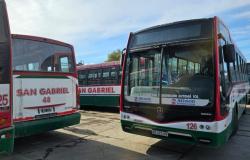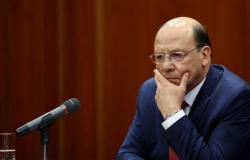Buenos Aires, May 5 (EFE) .- The government of Argentina prepares a series of measures to stimulate that Argentines use US dollars who treasure outside the financial system.
“What we are going to do is going to make people much more
The measures in preparation aim to inject money into the Argentine economy, which has suffered last year the impact of a severe tax adjustment, while helping to rebuild the still meager monetary reserves of the Central Bank, which on Monday closed at 38,949 million dollars.
In statements to the live video channel, Caputo said that for the Government the growth of economic activity is a “priority” and said that, in order for this expansion to be consolidated, it is necessary that there be an injection of money into the economy.
The minister explained that this ‘remumination’ will not be possible through the injection of Argentine pesos, since the government has as a policy the ‘zero’ monetary issuance, but must be carried out by injection of dollars.
According to Caputo, ‘remaining’ in this way is the most “logical” because “there are many more dollars than pesos.”
“That is what we are pointing. It has to do with deregulations,” said the minister, who, without giving major details, said that resolutions of the Central Bank, the Ministry of Economy and the Customs Collection and Control Agency (Arca, Argentine Treasury) “are prepared to make it more normal” do operations in dollars.
“In a normal country, if you spend, nobody is asking for explanations all the time,” said the minister.
Argentina is a bimonary economy ‘in fact’, in which, although there is its own currency, it is the price of the US dollar that determines the daily decisions of investors, companies and families, an obsession forged in the heat of the recurring financial crises of the South American country.
For decades, Argentines take refuge in the dollar to take care of how much or little they save.
The Argentine peso is the official currency since its creation in 1992 and since then and for a decade it was equivalent to a dollar, the famous ‘one by one’ of the convertibility regime that imploded with the outbreak of the huge economic, political and social crisis of the late 2001.
Depreciated by the succession of failures in economic policy, currently the Argentine peso is worth little less than a tenth dollar to the official exchange rate.
This history has reinforced the practice of monopolizing dollars as a mechanism for saving and coverage in the face of devaluation and inflation and, in addition, of maintaining dollars outside the Argentine financial system for fear of confiscation.
According to official data corresponding to the last quarter of 2024, Argentines treasure 246,029 million dollars in accounts outside the country, in security boxes or in saved tickets ‘under the mattress’, a figure several times higher than that of the reserves of the Argentine Central Bank. EFE






